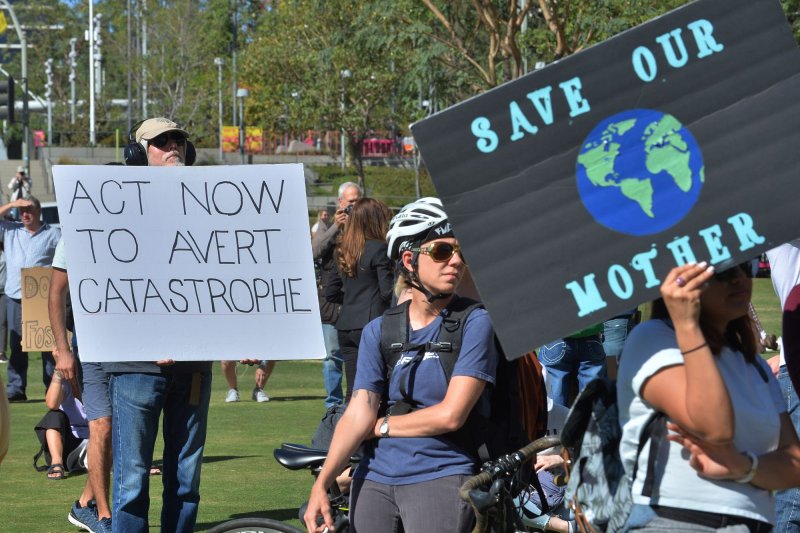Demonstrators gather outside Los Angeles City Hall to protest fossil fuel production in California on November 1. Photo by Jim Ruymen/UPI |
License Photo
Jan. 8 (UPI) -- House Democrats on Wednesday outlined a climate bill that would seek to push the United States to achieve net-zero carbon emissions by 2050.
Chairman Frank Pallone, D-N.J., and other members of the committee presented the outline for the bill known as the Climate Leadership and Environmental Action for Our Nation's Future Act.
"This plan represents our commitment to achieving net-zero greenhouse gas pollution. For the sake of the American people, the long-term sustainability of our economy and public health, we must act boldly and that is exactly what we intend to do," Pallone said in a statement.
The proposal would require all retail electricity suppliers to provide an increasing supply of clean energy to consumers beginning in 2022 and then obtain 100 percent clean energy by 2050. Suppliers will be required to possess a certain amount of "clean energy credits" at the end of each year, which they can buy and trade from one another via auction.
The building sector would be required to produce zero-energy-ready buildings by 2030 while the proposal would establish a Buy Clean Program that would require industrial projects that receive federal funding to "only use the cleanest construction materials."
Under the CLEAN Future Act, the Environmental Protection Agency would be directed to set new and increasingly stringent greenhouse gas emission standards for light-, medium- and heavy-duty vehicles and require year-over-year improvements to those standards.
It also grants states the flexibility to implement policies to meet the 2050 emissions deadline, which would be funded by a National Climat Bank that will "mobilize public and private investments to provide financing for low- and zero-emissions energy technologies, climate resiliency, building efficiency and electrification, industrial decarbonization, grid modernization, agriculture projects and clean transportation."















